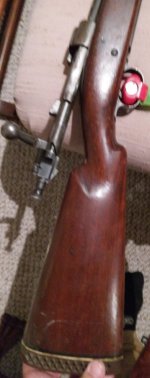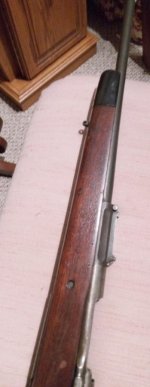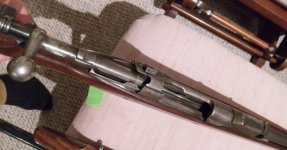tactical lever
CGN frequent flyer
- Location
- Fox Creek, Alberta
Hi guys and gals.
Recently acquired a Springfield 1903 with a (factory ?) sporter stock.
Very rough cosmetically, and has a buggered up rear sight. Not drilled and tapped, and I believe rebarreled at some point.
Am I going to wreck some future collectibility of this rifle if I refinish it?
I don't think it's worth too much, but I think I'd like to fix the sights and make the rifle a bit nicer looking.
The rifle is a Rock Island Arsenal made in 1918 before the improvement in heat treatment according to what I've read.
If that makes any difference?
Thanks for the replies!
Recently acquired a Springfield 1903 with a (factory ?) sporter stock.
Very rough cosmetically, and has a buggered up rear sight. Not drilled and tapped, and I believe rebarreled at some point.
Am I going to wreck some future collectibility of this rifle if I refinish it?
I don't think it's worth too much, but I think I'd like to fix the sights and make the rifle a bit nicer looking.
The rifle is a Rock Island Arsenal made in 1918 before the improvement in heat treatment according to what I've read.
If that makes any difference?
Thanks for the replies!









































































